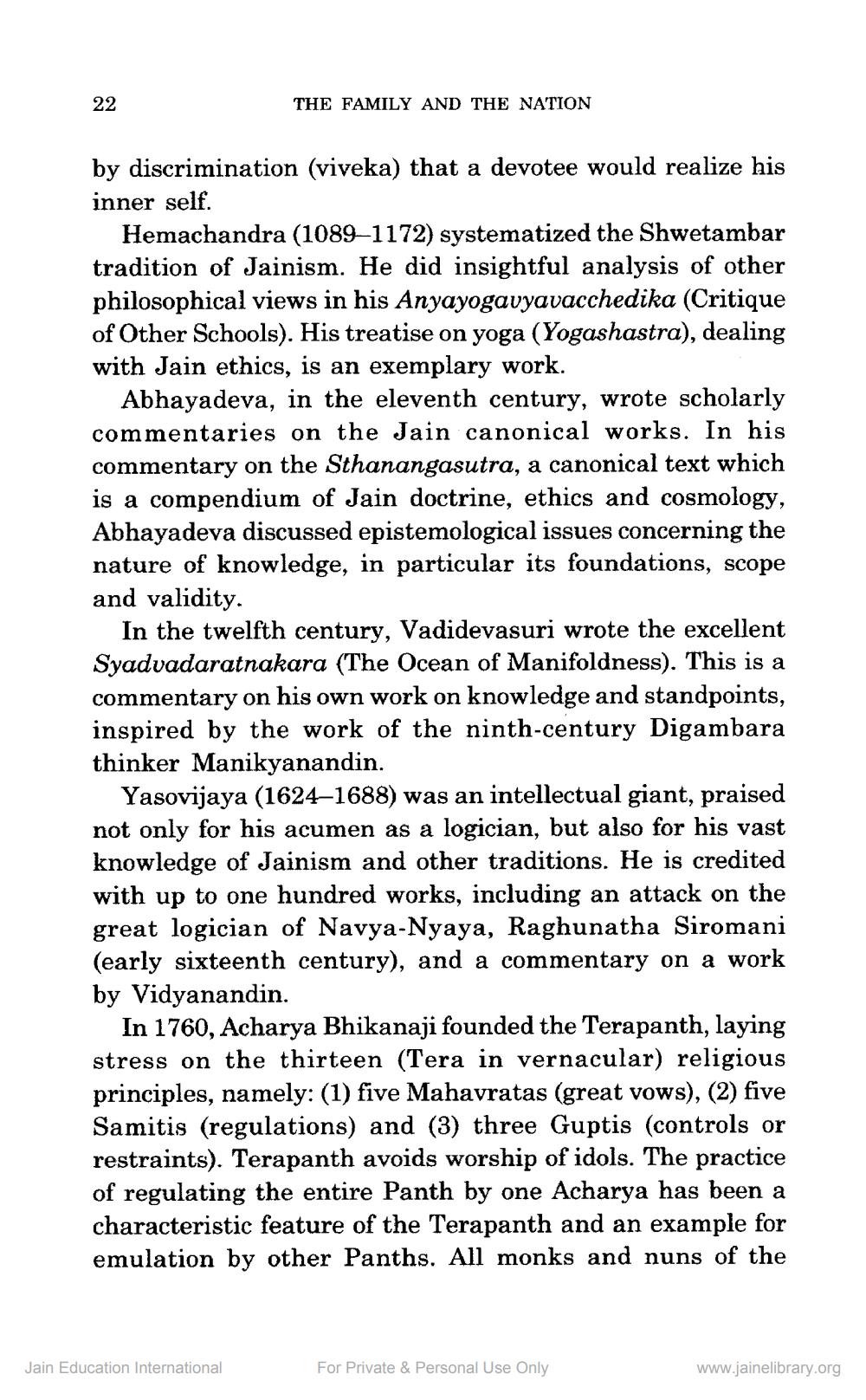________________
22
THE FAMILY AND THE NATION
by discrimination (viveka) that a devotee would realize his inner self.
Hemachandra (1089–1172) systematized the Shwetambar tradition of Jainism. He did insightful analysis of other philosophical views in his Anyayogavyavacchedika (Critique of Other Schools). His treatise on yoga (Yogashastra), dealing with Jain ethics, is an exemplary work.
Abhayadeva, in the eleventh century, wrote scholarly commentaries on the Jain canonical works. In his commentary on the Sthanangasutra, a canonical text which is a compendium of Jain doctrine, ethics and cosmology, Abhayadeva discussed epistemological issues concerning the nature of knowledge, in particular its foundations, scope and validity.
In the twelfth century, Vadidevasuri wrote the excellent Syadvadaratnakara (The Ocean of Manifoldness). This is a commentary on his own work on knowledge and standpoints, inspired by the work of the ninth-century Digambara thinker Manikyanandin.
Yasovijaya (1624–1688) was an intellectual giant, praised not only for his acumen as a logician, but also for his vast knowledge of Jainism and other traditions. He is credited with up to one hundred works, including an attack on the great logician of Navya-Nyaya, Raghunatha Siromani (early sixteenth century), and a commentary on a work by Vidyanandin.
In 1760, Acharya Bhikanaji founded the Terapanth, laying stress on the thirteen (Tera in vernacular) religious principles, namely: (1) five Mahavratas (great vows), (2) five Samitis (regulations) and (3) three Guptis (controls or restraints). Terapanth avoids worship of idols. The practice of regulating the entire Panth by one Acharya has been a characteristic feature of the Terapanth and an example for emulation by other Panths. All monks and nuns of the
Jain Education International
For Private & Personal Use Only
www.jainelibrary.org




